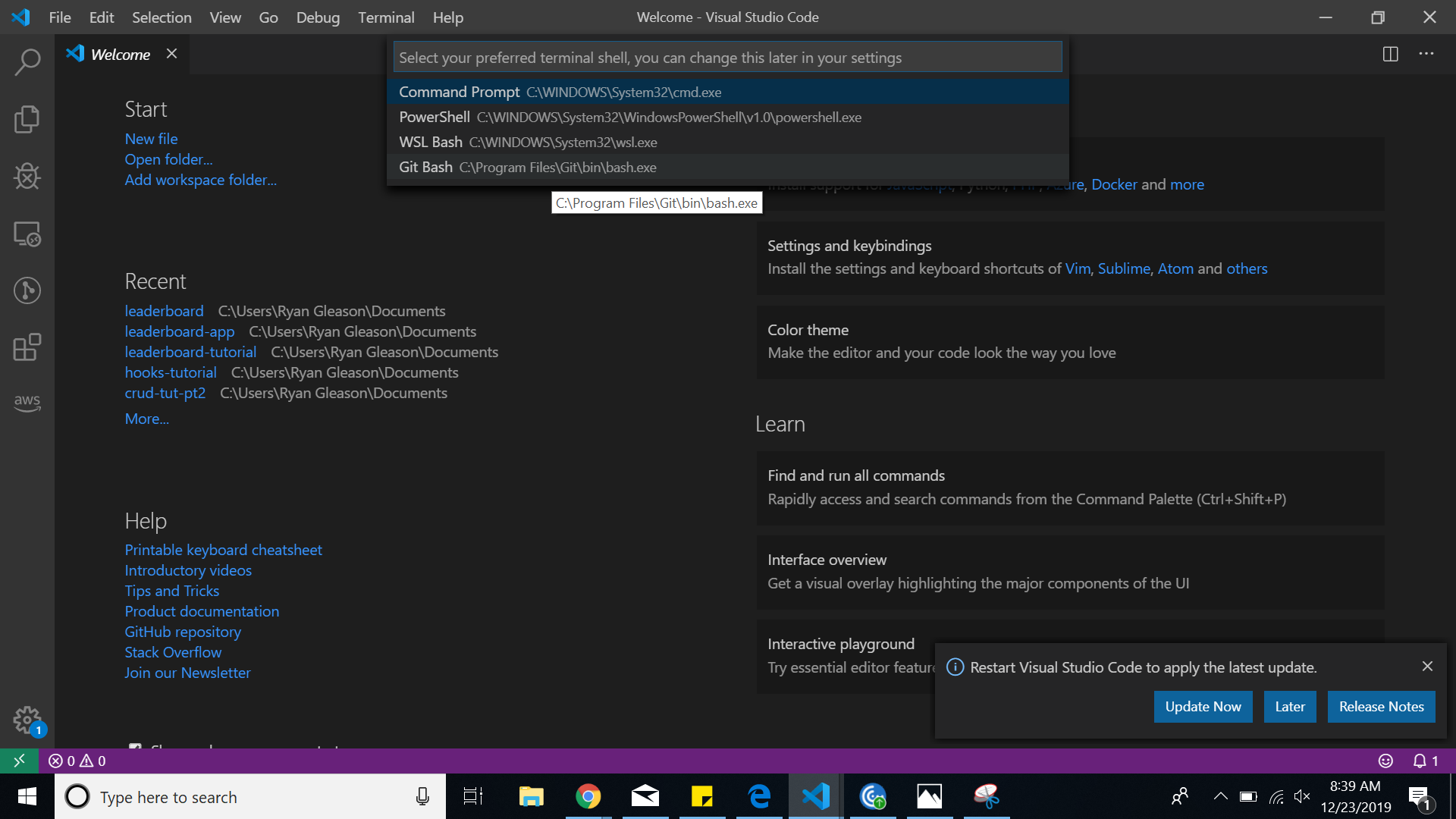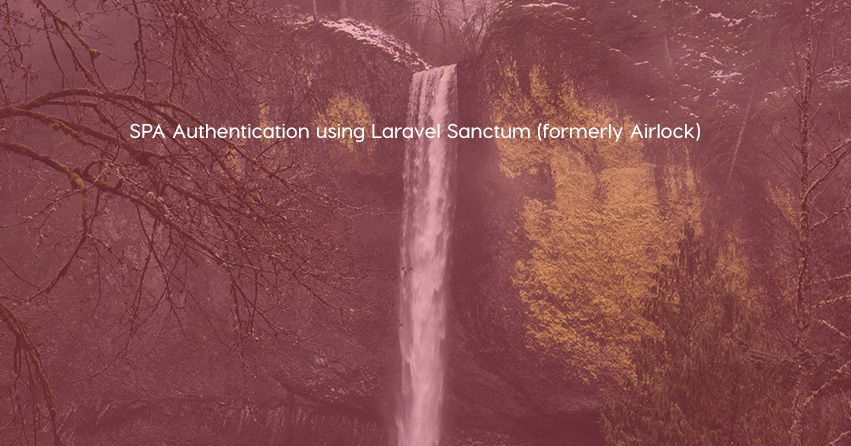Vuejs Form Example Summary. We learned a good deal about forms and VueJs in this tutorial. We covered how to use all of the standard html form controls in addition to creating our very own custom control as a Vue component. Visual Studio Code (VS Code): This certainly isn’t a requirement for creating Vue applications, but it is my recommended text editor. I believe it makes software development a lot more enjoyable and productive. Git Bash: Git is a very popular tool used to manage source code, especially if you are working on a large development team.
Extension for Visual Studio Code - A beautify extension for.vue file.
Format single file with '.vue' used in 'vscode' editor.(vscode 编辑器格式化插件,格式化单文件“.vue”文件代码)https://marketplace.visualstudio.com/items?itemName=febean.vue-format
FeaturesRequirements
Keyboard Shortcuts
Extension Settings
ChangelogU can see the changelog in CHANGELOG.md Todo ListSome things todo in todo.md |

In this tutorial for Visual Studio development ASP.NET Core and TypeScript, you create a simple web application, add some TypeScript code, and then run the app.
If you haven't already installed Visual Studio, go to the Visual Studio downloads page to install it for free.
If you haven't already installed Visual Studio, go to the Visual Studio downloads page to install it for free.
In this tutorial, you learn how to:
- Create an ASP.NET Core project
- Add the NuGet package for TypeScript support
- Add some TypeScript code
- Run the app
- Add a third-party library using npm

Prerequisites
You must have Visual Studio installed and the ASP.NET web development workload.
If you haven't already installed Visual Studio 2019, go to the Visual Studio downloads page to install it for free.
If you haven't already installed Visual Studio 2017, go to the Visual Studio downloads page to install it for free.
If you need to install the workload but already have Visual Studio, go to Tools > Get Tools and Features..., which opens the Visual Studio Installer. Choose the ASP.NET and web development workload, then choose Modify.

Create a new ASP.NET Core MVC project
Visual Studio manages files for a single application in a project. The project includes source code, resources, and configuration files.
Visual Studio Code Vuejs Example Pdf
Note
To start with an empty ASP.NET Core project and add a TypeScript frontend, see ASP.NET Core with TypeScript instead.
In this tutorial, you begin with a simple project containing code for an ASP.NET Core MVC app.
Vue Js Visual Studio 2019
Open Visual Studio.
Create a new project.
If the start window is not open, choose File > Start Window. On the start window, choose Create a new project. In the language drop-down list, choose C#. In the search box, type ASP.NET, then choose ASP.NET Core Web Application. Choose Next.
Type a name for the project and choose Create.
From the top menu bar, choose File > New > Project. In the left pane of the New Project dialog box, expand Visual C#, then choose .NET Core. In the middle pane, choose ASP.NET Core Web Application - C#, then choose OK.
If you don't see the ASP.NET Core Web Application project template, you must add the ASP.NET and web development workload. For detailed instructions, see the Prerequisites.
In the dialog box that appears, select Web Application (Model-View-Controller) in the dialog box, and then choose Create (or OK).
Visual Studio creates the new solution and opens your project in the right pane.
Add some code
In Solution Explorer (right pane). right-click the project node and choose Manage NuGet Packages. In the Browse tab, search for Microsoft.TypeScript.MSBuild, and then click Install on the right to install the package.
Visual Studio adds the NuGet package under the Dependencies node in Solution Explorer.
Right-click the project node and choose Add > New Item. Choose the TypeScript JSON Configuration File, and then click Add.
Visual Studio adds the tsconfig.json file to the project root. You can use this file to configure options for the TypeScript compiler.
Open tsconfig.json and replace the default code with the following code:
The outDir option specifies the output folder for the plain JavaScript files that are transpiled by the TypeScript compiler.
This configuration provides a basic introduction to using TypeScript. In other scenarios, for example when using gulp or webpack, you may want a different intermediate location for the transpiled JavaScript files, depending on your tools and configuration preferences, instead of wwwroot/js.
In Solution Explorer, right-click the project node and choose Add > New Folder. Use the name scripts for the new folder.
Right-click the scripts folder and choose Add > New Item. Choose the TypeScript File, type the name app.ts for the filename, and then click Add.
Visual Studio adds app.ts to the scripts folder.
Open app.ts and add the following TypeScript code.
Visual Studio provides IntelliSense support for your TypeScript code.
To test this, remove
.lastNamefrom thegreeterfunction, then retype the '.', and you see IntelliSense.Select
lastNameto add the last name back to the code.Open the Views/Home folder, and then open Index.cshtml.
Add the following HTML code to the end of the file.
Open the Views/Shared folder, and then open _Layout.cshtml.
Add the following script reference before the call to
@RenderSection('Scripts', required: false):
Build the application
Choose Build > Build Solution.
Although the app builds automatically when you run it, we want to take a look at something that happens during the build process.
Open the wwwroot/js folder, and you find two new files, app.js and the source map file, app.js.map. These files are generated by the TypeScript compiler.
Source map files are required for debugging.
Run the application
Press F5 (Debug > Start Debugging) to run the application.
The app opens in a browser.
In the browser window, you will see the Welcome heading and the Click Me button.
Click the button to display the message we specified in the TypeScript file.
Debug the application
Visual Studio Code Vue Js Example Key
Set a breakpoint in the
greeterfunction inapp.tsby clicking in the left margin in the code editor.Press F5 to run the application.
You may need to respond to a message to enable script debugging.
The application pauses at the breakpoint. Now, you can inspect variables and use debugger features.

Add TypeScript support for a third-party library
Follow instructions in npm package management to add a
package.jsonfile to your project. This adds npm support to your project.Note
For ASP.NET Core projects, you can also use Library Manager or yarn instead of npm to install client-side JavaScript and CSS files.
In this example, add a TypeScript definition file for jQuery to your project. Include the following in your package.json file.
This adds TypeScript support for jQuery. The jQuery library itself is already included in the MVC project template (look under wwwroot/lib in Solution Explorer). If you are using a different template, you may need to include the jquery npm package as well.
If the package in Solution Explorer is not installed, right-click the npm node and choose Restore Packages.
Note
In some scenarios, Solution Explorer may indicate that an npm package is out of sync with package.json due to a known issue described here. For example, the package may appear as not installed when it is installed. In most cases, you can update Solution Explorer by deleting package.json, restarting Visual Studio, and re-adding the package.json file as described earlier in this article.
In Solution Explorer, right-click the scripts folder and choose Add > New Item.
Choose TypeScript File, type library.ts, and choose Add.
In library.ts, add the following code.
For simplicity, this code displays a message using jQuery and an alert.
With TypeScript type definitions for jQuery added, you get IntelliSense support on jQuery objects when you type a '.' following a jQuery object, as shown here.
In _Layout.cshtml, update the script references to include
library.js.In Index.cshtml, add the following HTML to the end of the file.
Press F5 (Debug > Start Debugging) to run the application.
The app opens in the browser.
Click OK in the alert to see the page updated to jQuery version is: 3.3.1!!.
Next steps
You may want to learn more details about using TypeScript with ASP.NET Core.